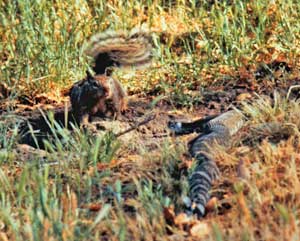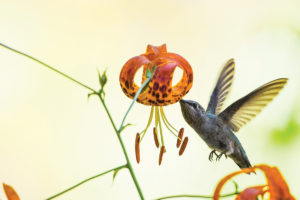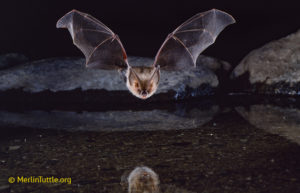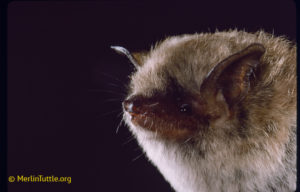They’re a familiar sight to hikers, from the Bay shoreline to Sunol Regional Wilderness. Clad in sepia-brown fur and a mantle dappled with white, California ground squirrels (Spermophilus beecheyi) can be seen scampering across trails, chirruping to their neighbors, or lolling on the crumbling dirt piled before their front doors. One of the most abundant mammals in California, and well adapted to the presence of humans, these gopher-size rodents can be found just about everywhere in the state’s extensive grasslands and oak savannas.
They may not seem worth a second glance, but California ground squirrels are the thread that binds state grassland ecosystems together. “Ground squirrels are a keystone species,” says Joe DiDonato, stewardship manager of the East Bay Regional Park District. For predators like weasels and gopher snakes, badgers and golden eagles, ground squirrels are an extraordinarily reliable and abundant source of sustenance. To fend off these predators, squirrels have evolved a remarkable array of defensive strategies. In particular, California ground squirrels and the northern Pacific rattlesnake have been locked in a relationship that is a prime example of coevolution in action. But ground squirrels are more than just dinner—they are engineers whose digging turns soil and moves seed, and whose burrows provide subterranean homes for all manner of beasts, from burrowing owls to endangered frogs and salamanders.
Wherever the grass is short, the vistas broad, and the forage plentiful, these eminently adaptable animals will dig themselves a home. California ground squirrels inhabit open fields from northern Mexico to southern Washington and east to the Sierra foothills. They gather in loose colonies or kinship groups of about a dozen animals, though some aggregations can contain several hundred.
- A red-tailed hawk looming over its kill, a California groundsquirrel. Squirrels are a very dependable food source for many raptors.In fact, the thriving squirrel populations around Sunol RegionalWilderness support the densest concentration of nesting golden eaglesanywhere in the world. Photo by Rick Lewis.
They cluster together primarily for protection: Many watchful eyes help keep each colony member safe from local carnivores. But compared to their Midwestern cousins the prairie dogs, California ground squirrels lead relatively independent lives. Adults keep primarily to themselves, each squirrel maintaining its own entrance to a communal burrow system, or even its own private digs. Females often set up house near their mothers, while males tend to travel up to a mile away to join different squirrel colonies.
Ground squirrels prefer real estate with a view—the clearer the field, the fewer places for predators to hide. Generally, this means meadows cropped short by cattle or deer, or lawns mowed by obliging humans. Within this grassy universe, California ground squirrels can choose from a diverse banquet of foods. From spring to summer, they feed on grasses and grass seeds, soft forbs, and vitamin-laden berries. In fall, they gobble up acorns, mushrooms, roots, and the leaves of shrubs. The high water content of their diet means the squirrels almost never have to take a drink. Though primarily vegetarian, California ground squirrels won’t pass up an easy meal of meat. They’ll kill voles and insects in their tunnels, scarf down the eggs of birds such as quail, or crack open shellfish if they live by the shore. In at least one area with a dense squirrel population, mother squirrels were even observed devouring their neighbors’ pups.
From the surface, squirrel colonies look like nothing more than a collection of small holes. But belowground, the land is honeycombed with tunnels and chambers. Though some squirrels set up camp under rocks and don’t live in burrows at all (especially at rip-rapped shorelines along the Bay), most excavate a lot of soil in their approximately four years of life. Their burrow systems can be six feet deep and more than 35 feet long, with multiple entrances for quick escapes, as well as chambers for nurseries, food storage, or sleeping.
“They’re really little engineers, when it comes right down to it,” says DiDonato. “Like gophers, they push the soil up. This may excavate buried seeds and generate an opportunity for plants to root in the loosened ground.” By mixing mineral dirt with organic matter, ground squirrels encourage microbes to grow, speeding up soil production, says grassland ecologist Paula Schiffman of California State University, Northridge. Because the dirt around squirrel colonies is less tightly packed than in surrounding areas, it can be several degrees warmer, fostering plant growth. And the churned dirt piles at burrow entrances are just right for plants that thrive in disturbed areas, including natives such as bristly fiddleneck and dobie pod, but also, unfortunately, the invasive European grasses that now dominate most of California’s savannas.
Belowground, the burrows are sheltered and cool no matter the weather above. This comfortable climate draws a diverse cast of grassland animals—mice, voles, tarantulas, and several species of beetles that live exclusively in rodent tunnels. Then there are the local amphibians. Ground squirrels actually make it possible for moisture-loving amphibians to live in the hot, dry hills of the Diablo Range. As the weather warms and ponds dry up, California red-legged frogs, western toads, ensatina salamanders, and California tiger salamanders retreat to the cool refuge of squirrel burrows—often while the squirrels are still living inside. The frogs and toads come and go, but the taxicab-tinted tiger salamanders move in for the long haul: they stay underground for up to ten months each year, emerging only in winter to breed.
With this crowd, squirrel burrows are almost mini-ecosystems of their own. Worms and beetles crawling out of the walls may get eaten by the amphibians, while mice and voles go after the squirrels’ caches of nuts and seeds. Larger creatures— burrowing owls, coyotes, and San Joaquin kit foxes—often enlarge abandoned burrows and convert them into dens.
But ground squirrels do even more for grassland ecosystems than spread seeds and build shelters. Plentiful and prolific, they are a dinnertime mainstay for most of California’s savanna predators. Local badger populations depend almost entirely on ground squirrel colonies, says retired district naturalist Ron Russo. And studies of golden eagles in the park district show that ground squirrels may comprise up to 70 percent of their diets when the birds are rearing their young. DiDonato says the sheer abundance of ground squirrels around San Antonio Reservoir and Sunol Regional Wilderness supports the densest population of nesting golden eagles anywhere in the world. And back when grizzly bears prowled California, they dug out entire colonies for a snack.
With so many predators out to get them, ground squirrels face danger from every quarter. Instantly, a clear sky can darken to deadly in the shadow of a redtail. The bushes at colony’s edge may conceal a hungry coyote. And the long, slender object just inches from the burrow—stick or snake? It makes a critical difference.

- Faced with a rattler, this ground squirrel is “tail-flagging,”waving and heating its tail in a show of aggression unmistakable to theheat-sensitive snake. Photo by Richard G. Coss.
To survive in this dangerous environment, California ground squirrels have evolved a suite of sophisticated defenses. Donald Owings and Richard Coss of UC Davis’ psychology department have spent the past 30 years unraveling the nuances of squirrel and predator interactions. After thousands of hours of observing these face-offs in the lab and in the wild, they have pieced together a remarkable tale of predator-prey coevolution.
When ground squirrels spot a predator, they employ three distinct calls to advertise its type to the rest of the colony. Though the alarms do alert other squirrels, they aren’t entirely altruistic. “If you whistle, and everybody runs, then you mask your own sprint to refuge,” Owings says. “You’re endangering others by diluting the risk,” Coss adds.
Faced with a four-legged enemy—whether coyote, fox, or badger—a squirrel chatters loudly and flees to the security of a burrow. Aerial predators like hawks elicit a single whistle, emitted while sprinting to the nearest bush, tunnel, or other shelter.
But the grudge match between the California ground squirrel and the northern Pacific rattlesnake is the one to watch. In spring, the rattlers emerge from a long winter hibernation, slowly warming up and becoming more active. When the snakes head out hunting, their best chance for a quick meal is often the nearest ground squirrel colony.
The first squirrel to see an approaching rattler chirps out a snake alarm that is more sporadic and repeated less frequently than the alarm signaling a mammalian predator. The call gets the rest of the colony scanning the ground for a lurking reptile. Squirrels that pick up on the threat bristle their tails and wave them vigorously from side to side. If the reptile is a rattler rather than a gopher snake, the squirrels continue this tail-flagging until their muscles heat up. It’s a message of aggression that a rattlesnake, with two heat-sensitive pit organs on its head, can’t miss: “We know you’re here, so scram!” Owings and his colleagues have shown that the infrared signal often prompts rattlers to shift from predatory to defensive behaviors.
Faced with a testy rattlesnake, a prudent human would back off. But adult California ground squirrels can afford to be bold. These seemingly defenseless bundles of fur have enzymes in their blood that render rattler toxins less potent.
But the snake is really after young pups, just born and still too small to be immune to the rattler’s venom. A hungry rattler will search the colony until it finds an adult female—a sign that vulnerable pups might be nearby. The mother squirrel leaps to her feet and stands stock still, every sense on alert. As the snake glides around her, it’s all she can do to keep from moving. “Our speculation is she resists doing anything [that might betray] information about where the babies are located,” Owings says.
The instant the rattler gets too close to her burrow, the squirrel springs into action. With her front paws, she blasts the snake with volleys of dirt and pebbles. The snake may respond with halfhearted strikes, but the squirrel won’t back down: Her pups are in mortal danger. In the 1940s, zoologist Henry Fitch found that the springtime diet of northern Pacific rattlers was nearly 70 percent squirrel pup. “That’s when we see rattlers [hunting squirrels] most intensively—when the pups are these cute, doddering things that sit at the mouth of the burrow and wrestle with one another,” Owings says.
Even if a snake enters her burrow, a mother squirrel won’t give up. Owings and Coss have watched more than one squirrel brave a direct strike from a rattler to get to her pups. She may intercept the snake using another tunnel, then pile dirt in front of it to slow it down. Sometimes, she gets help from other squirrels, who may mob and bite the reptile until it retreats.
Charging a snake might serve a second purpose: to goad the snake into giving a warning rattle. The sound helps the squirrels glean information about the snake’s size and temperature—data difficult to obtain by sight alone—and therefore judge how dangerous it is. The warmer the snake, the faster it can move, and the larger it is, the farther it can strike.
One of the best places to observe snake-versus-squirrel standoffs is at Camp Ohlone, south of Sunol Regional Wilderness along Alameda Creek. “The snakes hibernated up in these canyon walls,” Owings recounts, “and would come down and go after the babies from late April into June. You could see these encounters just about any time; it was amazing.”
In what appears to be another defensive adaptation, squirrels will chew on, roll over, and even drag the shed skins of rattlers back to their burrows. Experiments suggest the squirrels are anointing themselves with the snake’s scent, which may frighten away other predators. Rattlers pose such a threat that ground squirrels can identify them almost from infancy. “Even before they open their eyes, they can recognize a snake by its smell, and from the first day they can use their vision to avoid obstacles, they can recognize snakes by their scale patterns,” Coss says. The two species’ evolutionary arms race began some 15 million years ago, about when the squirrels first ventured out of the trees. Faced with a predator that could enter burrows and kill with one bite, the squirrels evolved multiple defense strategies to survive. Without constant pressure from rattlers, the squirrels seem to lose their snake defenses. The longer a ground squirrel population has been living in a rattler-free area, the less likely it is to have retained venom resistance. And squirrel resistance also seems to drive the toxicity of rattler venom. “Other species are evolving immunity,” says Coss, “and the rattlers up the power of their venom to overwhelm this resistance.”
In recent times, rattlers have had some competition as the squirrels’ greatest enemy. Since the first days of European settlement in California, people have shot, trapped, and poisoned ground squirrels en masse. Often this kills golden eagles and other predators, since they feed on the poisoned carcasses. Many people consider the squirrels a nuisance because they compete for harvests and cattle forage, and their digging can undermine buildings and create hazards for livestock. Some squirrel populations in the Delta have been virtually extirpated; their burrows, often dug into earthen levees, are considered a threat to levee stability. And because humans prefer the same open, grassy fields as ground squirrels, development has paved over large swaths of prime squirrel habitat. The park district follows a no-poisoning policy on all but a handful of highly developed areas, so its properties are a ground squirrel haven, constituting the region’s largest tracts of squirrel territory.
At the same time, human modifications to the environment are responsible for much of the squirrels’ present-day success. In the mid-1800s, farmers and ranchers began draining Central Valley wetlands. The new meadows and farms that sprang up afterward proved ideal habitat for the plucky rodents. As a result, Coss and Owings say, this so-called “weedy species” may be more numerous now than it was 300 years ago. In an era where development has devastated many other species, the ground squirrel is a true survivor whose continued presence makes life possible for lordly eagles and lowly salamanders alike.

.jpg)




